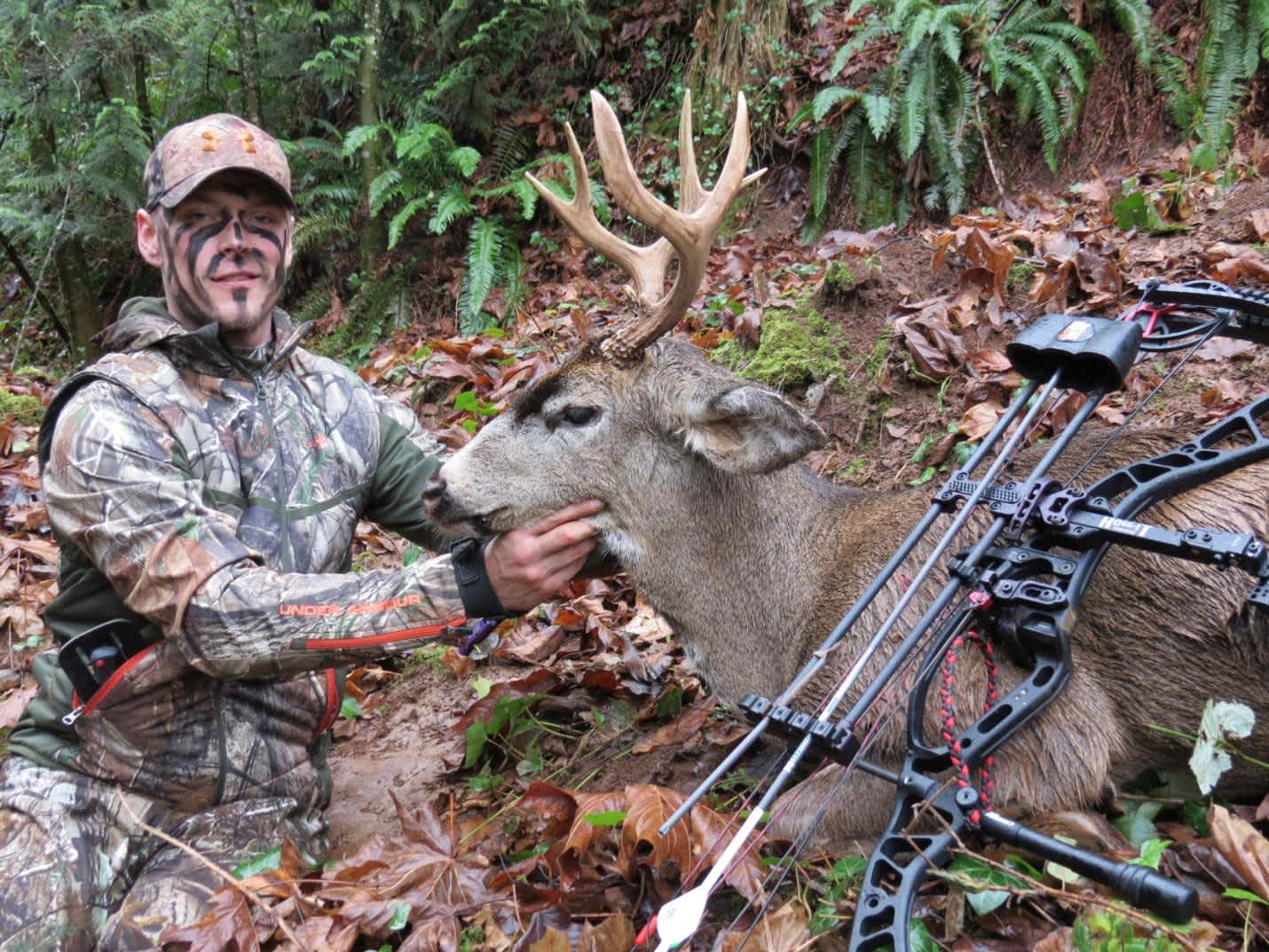The Gray Ghosts of Christmas Present: Columbian Blacktail
K.J. Houtman 12.09.13


They are elusive. Hunting them is physically punishing, and will push you to your breaking point. They are the West Coast trophy deer—the Columbian blacktail. “Bowhunting Beast” Austin Kincaid of Aloha, Oregon, took two trophies this holiday season.
“I can die a happy man,” sighed Austin, reflecting on his harvests. The pearly gates are, hopefully, still a long ways off for this young man in his late 20s. One trophy blacktail was a blessing. Two within 15 days has Austin on his knees giving thanks for an amazing year.
What makes the blacktail deer so hard to hunt? How does the species earn the honor of “Gray Ghost of the Northwest?”
“They live in the thickest of terrain and can hide from a hunter within seconds, never to be seen again,” said Austin. Sword fern is thick underbrush, prevalent in the environs of the Columbian blacktail. It is a bugger to walk through and can grow incredibly tall. Ideally, Austin advised, get up in a stand and look down. “I did a lot of scouting all summer long and had trail cams out watching the movement of the does. I knew we were in a good spot when the rut would turn on.” Austin hunted on public land about a half-mile in from the nearest road in any direction. He found the spot last spring. He trains hard to hunt, and runs many miles on in the wooded trails in the Cascade Mountains near Mount Hood.
Columbian blacktail deer often stay in a core area, so they just don’t move a great distance—as little as one-tenth the acreage a whitetail deer might cover. That makes them hard to find. “Turns out the first deer that I took was never on a trail cam photo over 11 months,” said Austin. “I saw plenty of shooter bucks and I decided to wait with the high traffic coming in that first morning. It was a good call, this big buck came running in on a doe. I drew back and shot at 50 yards out. Perfectly placed, it was a clean shot and he died within four seconds. He didn’t make it 40 yards.”

The rut is the best time to find the trophies. Earlier in the season, the temps are in the 80s and 90s and it is too hot, so they aren’t moving. It is also too dry, so tracking them is almost impossible—even if they are moving. Waiting for an Oregon wet and windy day is the key, and those show up in November. Having the right setup ready for a nasty day when nature’s hormones are running is just the ticket to get them moving into your sights.
The second buck came through a special “urban reduction” tag that Austin drew. The owner of a company that Austin works for kept seeing a big buck on their property. The invitation arrived to hunt with the urban tag on their private land. There were two acres of wooded area on the property. Austin set up a trail cam on November 30, and dropped some apples and doe urine. Baiting is legal in Oregon. The next morning he arrived an hour before daybreak and perched on a bench above the apples. At 7:45 a.m. Austin was stunned to see him arrive, and quickly dispatched the buck with a 25-yard broadside shot. “I pin-wheeled him, and he went only a short 30 yards before expiring,” said Austin. “Less than one hour of hunt time and I got him.” The old monarch buck was aged 5-1/2 years. It was the buck Austin’s boss had seen on her property.
This has been an amazing hunting season for Austin. A brand new baby in the house added pressure to be efficient and home more than usual during hunting season. He was out a total of eight hours with bow in hand, and scored an elk before the two blacktail deer. “I’d like to say it is because of my dedication all year long, for the hundreds of hours of scouting and hundreds of hours of hiking and biking in the terrain. But I do feel lucky, and incredibly blessed,” Austin said. A new wife, a new son, and a hunting season that will dance in Austin’s head this Christmas like sugarplums. This Gray Ghost of Christmas Present will live on.
K.J. Houtman is the author of the award-winning Fish On Kids Books series, chapter books for eight- to 12-year-olds with adventures based around fishing, camping, and hunting. Her work is available at Amazon and local bookstores. Find out more at fishonkidsbooks.com.

